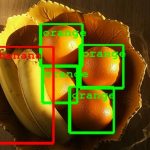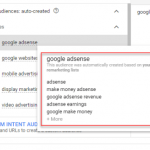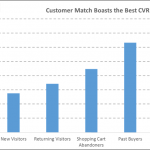Google I/O 2016: Everything (We Think) Will Be Announced
It’s I/O time again, when thousands of developers flock to California to see and learn about Google’s latest product advancements and dev tools.
These conferences are hugely important to platform companies like Google—they offer a chance to get the developer base fired up once again about creating apps and services for the company’s numerous platforms.
This year’s I/O should be a good show. As you’ll read below, some of the storylines around key Google products are ripe for dramatic developments.
Here are things we believe will be announced this Wednesday.
Android VR
Big phone makers like Samsung and HTC are hoping that new virtual reality gear will hook consumers more deeply into their platforms (and ultimately sell more phones). Google wants to do the same thing for Android. Rumors have been flying that the company will announce its own VR headset at I/O. Google released its quick and dirty Cardboard phone-based VR product at I/O a couple of years ago, but this time we’re likely to see something more serious. It might be a phone-driven VR headset like Samsung Gear VR or HTC Vive, or a stand-alone VR headset like the Oculus Rift.
The winds seem to be blowing in this direction. Google’s YouTube only recently became the first video platform to support live 360-degree video.
Android N
Google’s star player is its Android mobile OS, and the company will likely show off some new features in the newest version—Android N. Google uses I/O every year to announce (and formally name) the latest OS, but this year will be a little different. That’s because the company already announced some major features with the release of a developer preview in March. These included a new notification panel, a split-screen mode, as well as support for some new APIs to soup up gaming performance. Hopefully Google has some more Android tricks up its sleeve to announce at I/O.
Project Tango
Google will likely spend some time during the keynote to talk about its Project Tango indoor augmented reality mapping software, perhaps showing off the work of some partner companies. For instance, Lenovo has already announced a phone that uses the Project Tango software to guide users around complex indoor places like, say, the Tokyo subway or the Mall of America.
Through the phone or tablet screen, the user sees the environment they’re moving through, and the software recognizes places and things along the way and affixes virtual labels to them. That’s just the start. Users can use the software to drill down on specific real-world items for more information, or read indoor navigation directions.
Google’s Home Personal Assistant
All you have to do is check out the videos for Google’s OnHub Wi-Fi router to see that the device could easily morph into something a lot like Amazon’s Echo home personal assistant. The OnHub even looks like the Echo.
Google recently added IFTT (If This Then That) support so that OnHub can connect with and control things such as door locks, home cameras (including Nest), and lights. The Echo manages these home control tasks, too.
Now, rumors have it that Google is developing an OnHub-like device (known internally as “Chirp”) that contains the crucial personal assistant AI. The new device may understand voice commands and requests, read recipes and news, play music, call Ubers, make lists, and do a host of other things—like the Echo does.
I’ve written how Amazon’s Alexa may be the ultimate home personal assistant device. We may see Google pursue a similar model to fire up developers about the company’s vision for the connected home.
Chrome OS and Android
Another juicy rumor floating around this year is that Google plans to fold the Chrome OS desktop operating system into the Android mobile OS. This would be something similar to Microsoft merging its Windows Phone OS with Windows 10.
If Google believes the time is right for such a merge, Android would likely incorporate selected features from Chrome OS but wouldn’t deviate much from its current development path. The mobile environment probably wouldn’t look that different from the way Android looks now (with its crisp material design theme). The biggest change, of course, would be that Chromebooks would get a new OS that looks and acts a lot more like Android.
Those are just the highlights we’re likely to see at this year’s I/O. We may also see updates to Google’s wearables OS Android Wear to its mobile payments platform Android Pay, to its Internet of Things OS Brillo, and hopefully to its Google Now personal assistant. We may also see some keynote time devoted to old favorites like YouTube, Maps, and Search. And yes, if we’re lucky we might get a big fat update on Google X’s progress with the self-driving car.
At any rate, the whole thing kicks off this Wednesday, May 18, at 10 a.m. PST when Google CEO Sundar Pichai walks out onto a big outdoor stage at Shoreline Amphitheater in Mountain View.
Fast Company will be on the ground soaking up the proceedings and issuing timely reports and analyses.
Fast Company , Read Full Story
(7)













